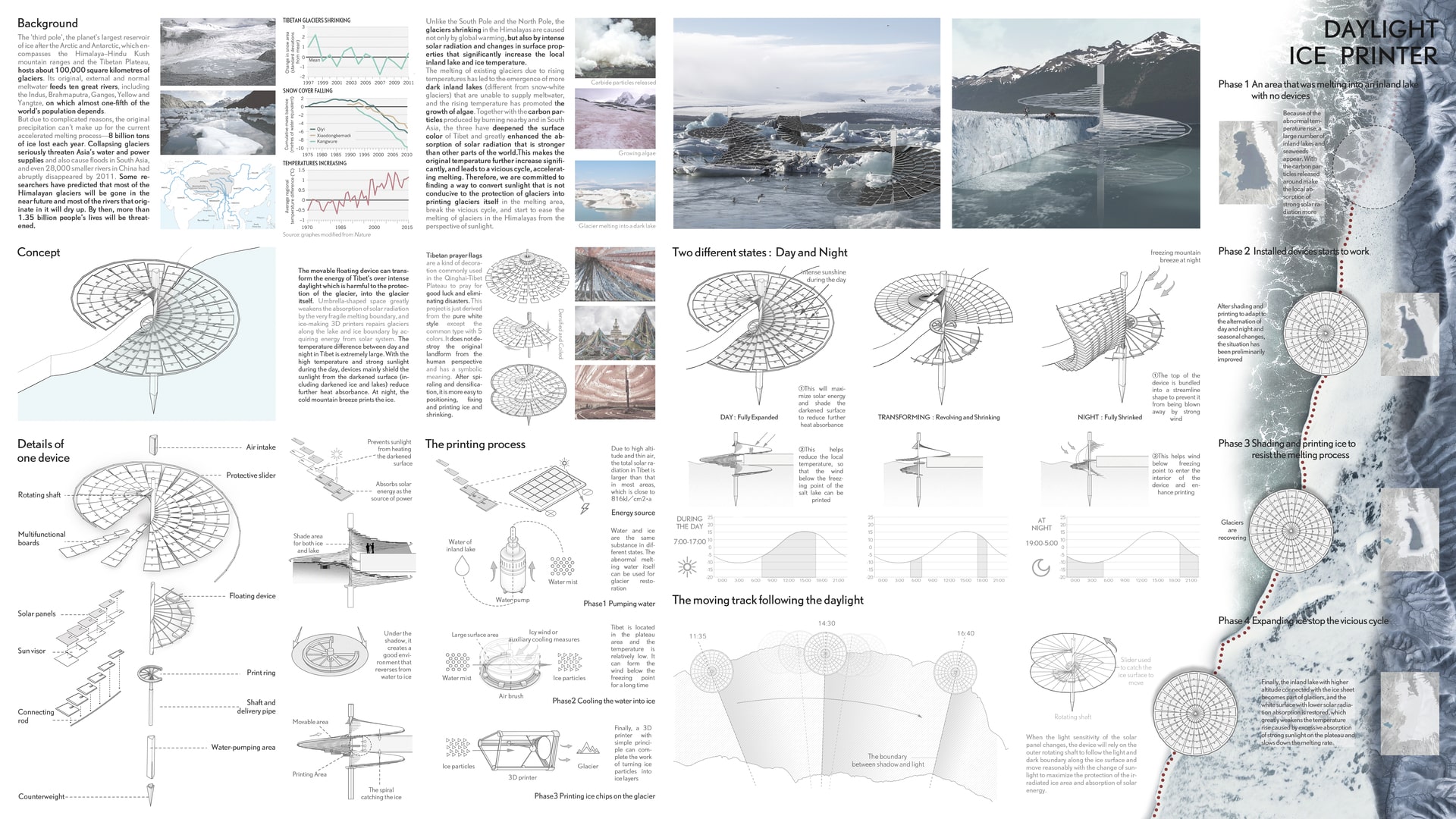Project Description
The 'third pole', the planet's largest reservoir of ice after the Arctic and Antarctic, which encompasses the Himalaya–Hindu Kush mountain ranges and the Tibetan Plateau, hosting about 100,000 square kilometres of glaciers, feeding ten great rivers ,including the Indus, Brahmaputra, Ganges, Yellow and Yangtze and nearly one fifth population of the world, is facing unprecedented challenges. 8 billion tons of ice lost each year, due to complicated reasons and the original precipitation can't make up for the current accelerated melting process. Collapsing glaciers seriously threaten Asia’s water and power supplies and some researchers have predicted that most of most of the rivers that originate in it will dry up due to the glacier that is about to disappear. By then, more than 1.35 billion people's lives will be threatened. Unlike the South Pole and the North Pole, the glaciers shrinking in the Himalayas are caused not only by global warming, but also by intense solar radiation and changes in surface properties that significantly increase the local inland lake and ice temperature. The dark inland lakes and the growth of algae are both caused by the melting process. Together with the carbon particles produced by burning nearby and in South Asia, the three have deepened the surface color of Tibet and greatly enhanced the absorption of solar radiation that is stronger than other parts of the world. This makes the original temperature further increase significantly, and leads to a vicious cycle, accelerating melting. Therefore, we are committed to finding a way to convert sunlight that is not conducive to the protection of glaciers into printing glaciers itself in the melting area, break the vicious cycle, and start to ease the melting of glaciers in the Himalayas from the perspective of sunlight. So we aim to design a movable floating device which can transform the energy of Tibet’s over intense daylight that is harmful to the protection of the glacier, into the glacier itself. Umbrella-shaped space greatly weakens the absorption of solar radiation by the very fragile melting boundary, and ice-making 3D printers repairs glaciers along the lake and ice boundary by acquiring energy from solar system. The temperature difference between day and night in Tibet is extremely large. With the high temperature and strong sunlight during the day, devices mainly shield the sunlight from the darkened surface (including darkened ice and lakes). At night, the cold mountain breeze prints the ice.
